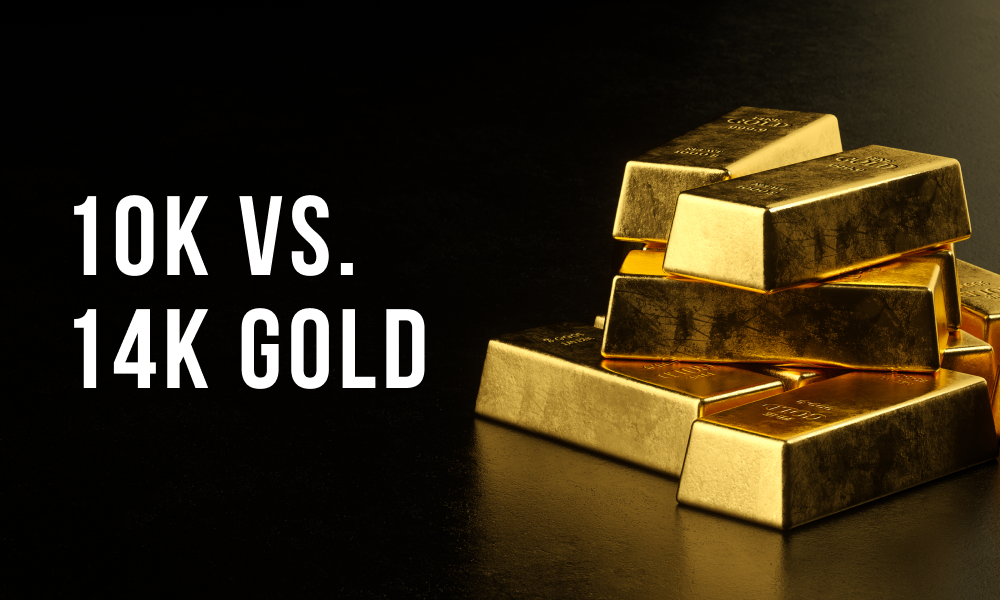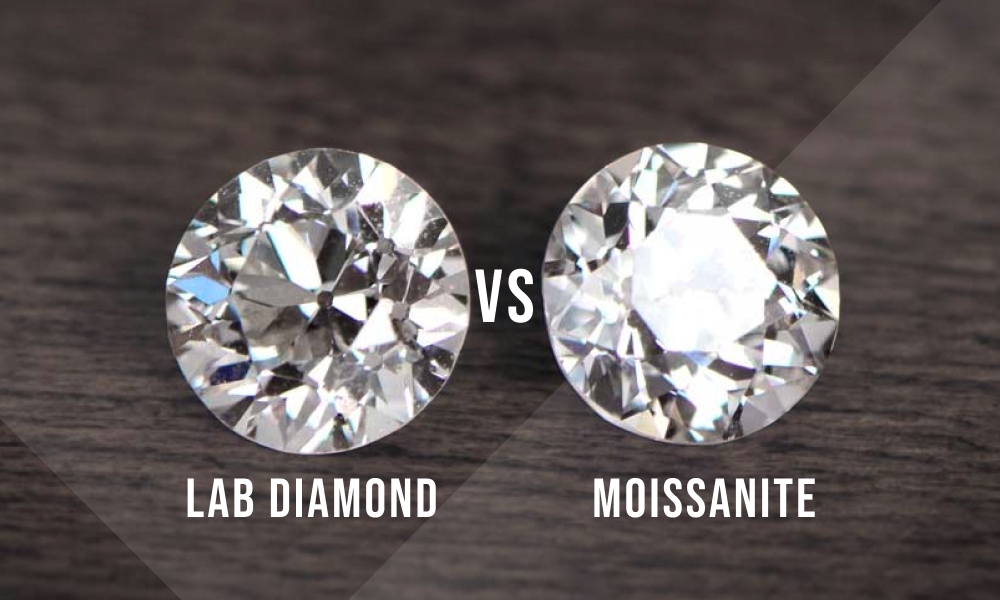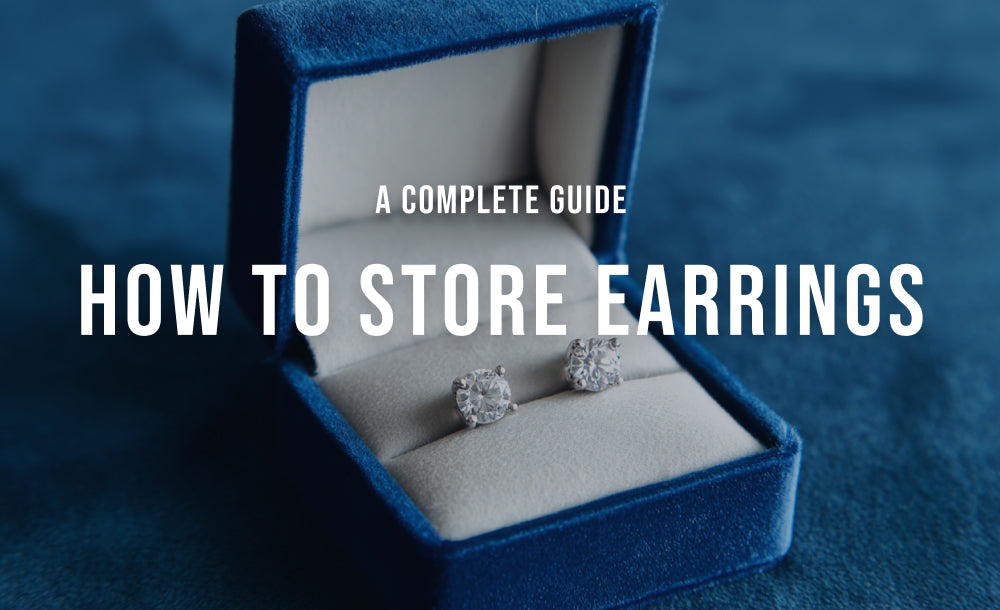Gold, the timeless symbol of wealth and beauty, has captivated humanity for millennia. Yet, when it comes to selecting gold jewelry, a common dilemma arises – should you opt for 10k vs 14k gold? This question is far from trivial, as the answer can significantly impact the jewelry’s durability, appearance, and price. But fear not, this guide will illuminate the intricacies of gold purity and empower you to make an informed decision.
Key Takeaways
-
The gold purity of 10k and 14k jewellery affects quality, durability, appearance and budget.
-
10K gold is more durable & affordable. 14K has a warmer hue but higher price point & may cause skin irritation.
-
Decision between 10K/14K should be based on personal preferences for use in jewelry or investment purposes.
Understanding Gold Purity: 10k vs 14k

The quality, durability, and appearance of a piece of jewelry are largely influenced by its gold purity, or the percentage of gold it contains. The karat system, which measures gold purity, reveals that 10k yellow gold is 41.7% pure, while 14k yellow gold is 58.3% pure. This means that 14k gold contains a higher percentage of gold.
Even this subtle difference can significantly influence various aspects of your jewelry. Despite their comparable level of shine and brilliance, 10k gold exhibits a slightly less intense yellow hue than 14k gold. This is due to the higher proportion of alloy metals in 10k gold, which also makes it more durable and budget-friendly.
Decoding the Karat System

Comprehending the karat system is fundamental to making knowledgeable choices about your gold jewelry. The system measures the ratio of pure gold to other alloys in gold jewelry. This helps to determine the jewelry’s purity. It’s a concept separate from the measurement of gem weight, which uses the carat system.
Predominant gold options - 10k and 14k gold - contain varying amounts of gold and alloy metals. Specifically, 10k gold has a gold content of 41.7%, while 14k gold contains 58.3% gold. The alloy metals, such as copper, nickel, and silver, are incorporated to enhance the jewelry’s durability, making them suitable for fine gold jewelry.
Main Differences Between 10K and 14K Gold
The decision to opt for 10K or 14K gold depends on their fundamental differences in:
-
Durability
-
Color
-
Price
-
Skin sensitivity
As we further examine these distinctions, you’ll acquire helpful knowledge to guide your decision-making process, whether you’re choosing a diamond engagement ring, engagement and wedding rings, a bracelet, or any other gold jewelry piece, including diamond jewelry and wedding rings.
Durability
Regarding durability, 10K gold has an advantage. Its higher percentage of alloy metals contributes to its superior durability and scratch resistance, making it an excellent choice for daily-worn jewelry like bracelets and rings.
These alloy metals, such as copper and nickel, enhance the gold’s durability and hardness, making it more suitable for everyday use. This characteristic of 10K gold provides a significant edge for those who prioritize durability in their jewelry.
Color and Appearance
In terms of color and aesthetics, 14K gold, including white gold, stands out. Its higher gold content leads to a warmer, more opulent yellow hue, which can be a significant factor for those who value the classic gold appearance.
Conversely, 10K gold exhibits a paler, less rich yellow tone. In some cases, it may even appear pinkish due to the high copper content in many of its alloys. This difference in appearance could be a deciding factor for those who hold the visual appeal of their jewelry in high regard.
👉 Learn more about gold colors in our blog: White Gold vs Yellow Gold - What’s The Difference?
Price Point
For many, price is a decisive factor when selecting between 10K and 14K gold. 10K gold generally costs less than 14K gold due to its lower percentage of pure gold, making it a more affordable option for those on a tight budget.
The current market value for 10K gold is approximately $27.11 per gram. However, it’s important to remember that the purity of gold directly influences its price. Higher purity gold commands a higher price, while lower purity gold, containing a higher percentage of other metals, has a lower value.
Sensitivity For Skin
Another important aspect to consider is skin sensitivity. 14K gold, with its higher gold content, is less likely to cause skin irritation than 10K gold, which contains a higher proportion of potentially allergenic alloy metals like nickel.
Indeed, metals like copper, silver, and zinc commonly combined with gold in 10K and 14K jewelry can potentially cause skin irritation in certain individuals. This factor should be seriously considered, especially for those with known sensitivities to metals.
Benefits of 10K Gold
10K gold presents numerous benefits. For one, it is notably more economical compared to higher karat options like 14K gold, making it a more cost-effective selection for budget-conscious consumers.
Moreover, 10K gold boasts superior durability due to its higher proportion of alloy metals. Its excellent hardness and scratch resistance make it an ideal choice for jewelry pieces intended for frequent use, such as daily-worn bracelets and rings.
Benefits of 14K Gold
Conversely, 14K gold offers its own unique advantages. It displays a more vibrant color due to its higher gold content, making it attractive for those who value the classic appearance of gold.
Furthermore, 14K gold is less likely to cause skin irritation, making it a more suitable choice for individuals with highly sensitive skin. Its wide availability and suitability for prolonged wear also make it a popular choice for high-quality jewelry such as engagement rings, wedding bands, and necklaces.
Icecartel uses 14K gold in It's jewelry. We have a selection for both solid and gold plated options. Browse Chains, rings, bracelets and many more here!
Disadvantages of 10K Gold
Choosing 10K gold, like any decision, has its own set of disadvantages. It doesn’t convey the same sense of luxury as higher karat golds due to its relatively low purity level, and its lighter appearance and less intense yellow hue might not appeal to those who prefer a richer gold appearance.
Moreover, due to its elevated alloy metal content, 10K gold is more likely to cause skin allergies in individuals sensitive to specific metals like copper and nickel. This can lead to discomfort and a perception of lower quality.
Disadvantages of 14K Gold
The higher price point of 14K gold can discourage some people. Its elevated gold content, which contributes to its increased value and cost, might not be within everyone’s budget.
14K gold is slightly less durable than 10K gold. This may impact the longevity of jewelry items made with 14K gold compared to those made with 10K gold. While it is still suitable for daily use, it is more susceptible to scratches and dents due to its higher percentage of gold, a softer metal.
Jewelry Types: Best Uses for 10k and 14k Gold

Preferences between 10K and 14K gold may vary depending on the type of jewelry. 10K gold is best suited for daily wear jewelry and heirloom pieces, making it an ideal choice for those seeking cost-effective options without sacrificing strength.
On the other hand, 14K gold is most suitably used in fine jewelry such as:
-
engagement rings
-
wedding bands
-
necklaces
-
bracelets
Its robustness and suitability for prolonged wear make wearable jewelry a popular choice for such significant pieces, as well as other wearable jewelry.
Investment Perspective: Resale Value and Heirloom Potential
Considering an investment perspective, popular gold is regarded as a praiseworthy option because of its durability, possible resale value, and potential to become an heirloom.
The resale value of 10K and 14K gold jewelry is influenced by several factors, including:
-
The purity of the gold
-
The weight of the jewelry
-
Current market prices for gold
-
The overall condition and quality of the piece
The typical resale value for 10K gold jewelry is approximately $25 per gram, but elements such as craftsmanship and design can also impact the resale value.
Bear in mind that solid gold has much higher resale value and lasts longer than gold filled, vermeil and plated options due to It's gold content.
Crafting the Perfect Engagement Ring
Creating the perfect engagement ring requires careful consideration of gold purity. The average cost of a 10K gold engagement ring can range from $100 to $1000 or more, while the setting of a 14K gold engagement ring can range from $500 to $1500, excluding the stones.
The visual difference between 10K and 14K gold can also be quite significant. It’s important to consider the appearance when making a gold purchase decision. A 10K gold engagement ring exhibits a lighter appearance and a less intense yellow hue, while a 14K gold ring showcases a brighter and more vibrant color, resulting in a distinct stylistic presentation. However, the likelihood of skin sensitivity reactions should also be considered, especially for those with known sensitivities.
The Verdict: Making an Informed Choice Between 10k and 14k Gold
Therefore, which is the superior choice - 10K or 14K gold? That primarily depends on personal preferences and priorities. If durability and affordability are your top considerations, then 10K gold might be the better choice. It is more durable due to its higher proportion of alloy metals, making it an ideal choice for jewelry that is worn daily.
On the other hand, if you value a richer and more vibrant yellow tone, then 14K gold might be more appealing. As it contains more pure gold, it exhibits a warmer and more opulent color. However, it is also more expensive than 10K gold.
Summary
In summary, both 10K and 14K gold have their unique advantages and disadvantages. 10K gold is more durable and affordable, making it a suitable choice for daily wear jewelry. On the other hand, 14K gold exhibits a richer color and is less likely to cause skin irritation, making it a better choice for high-quality jewelry and for individuals with sensitive skin.
Ultimately, the choice between 10K and 14K gold boils down to personal preferences, budget, and the intended use of the jewelry. By considering these factors, you can make an informed decision that best suits your needs and preferences.
Frequently Asked Questions
Is it better to get 10k or 14K gold?
Overall, 14k gold is the preferred choice in the U.S., as it has a higher percentage of pure gold than 10k, making it more valuable and desirable; however, 10k gold is more durable and resistant to wear.
Is 10k gold worth buying?
10K gold is a durable and cost-effective option that has some monetary value. However, you should be aware of the possibility of allergies related to the alloy it contains. All in all, 10K gold can still be worth buying depending on your needs and budget.
Is it OK to wear 10k gold?
10k gold is a durable and cost-effective choice, although those who are allergic to the alloy used may be sensitive. Overall, it is acceptable to wear 10k gold.
How long will 10k gold last?
10k gold is a durable and timeless metal that will never fade or tarnish, making it an ideal heirloom that can last a lifetime and be passed down to future generations.
What is the difference in gold purity between 10k and 14k gold?
10k yellow gold contains 41.7% pure gold, whereas 14k yellow gold consists of 58.3% pure gold, making it a higher purity than 10k.



































































